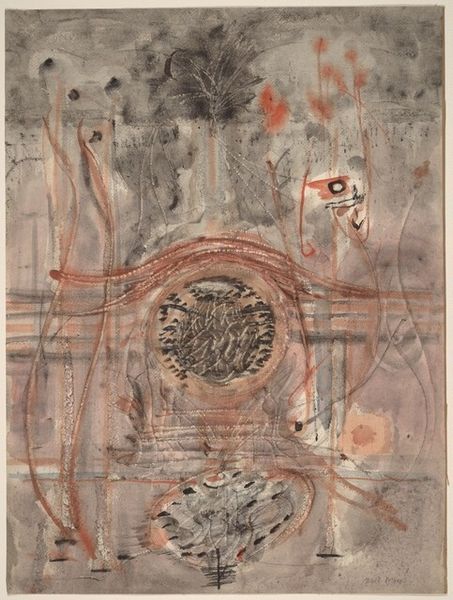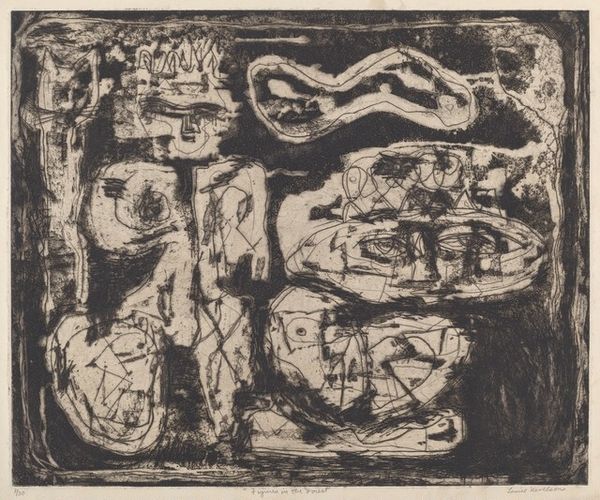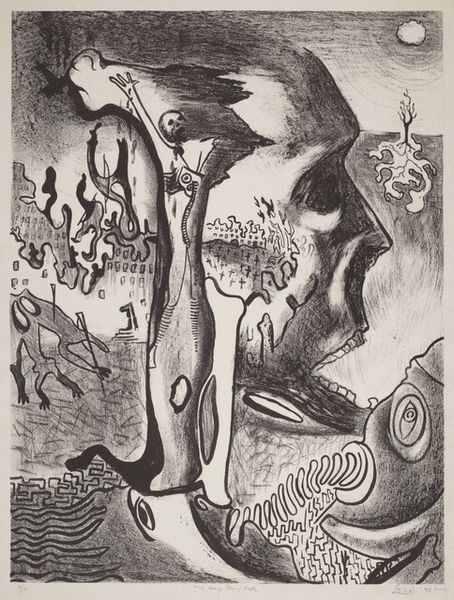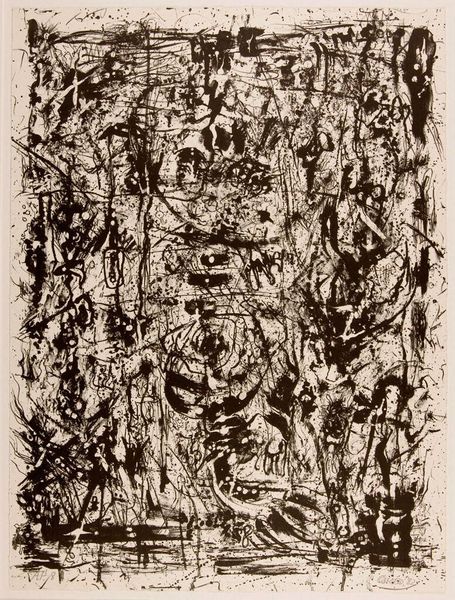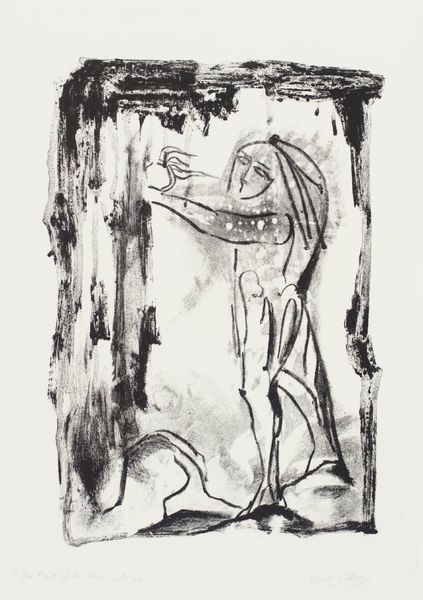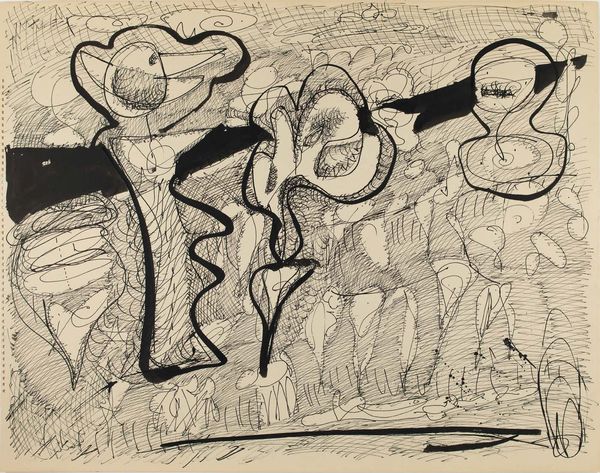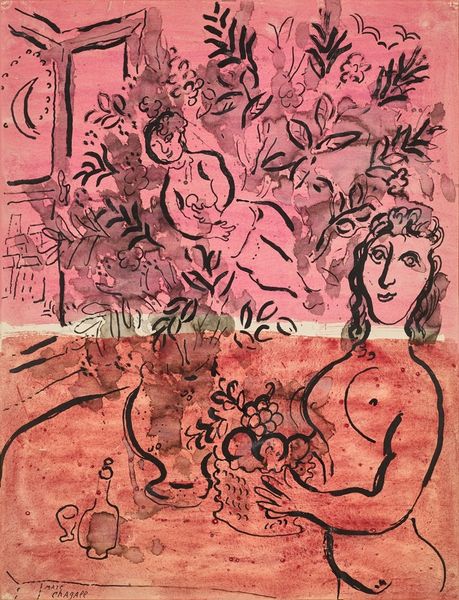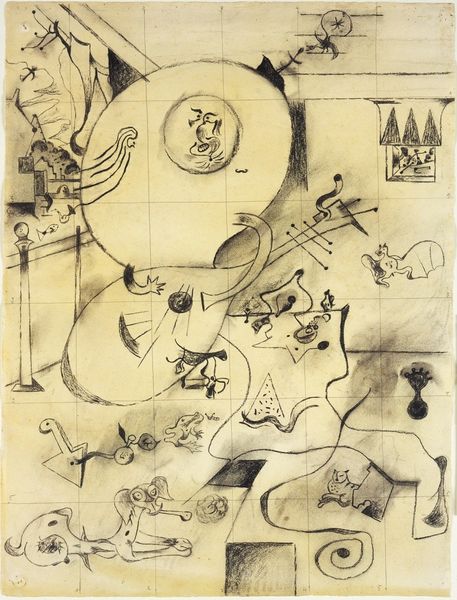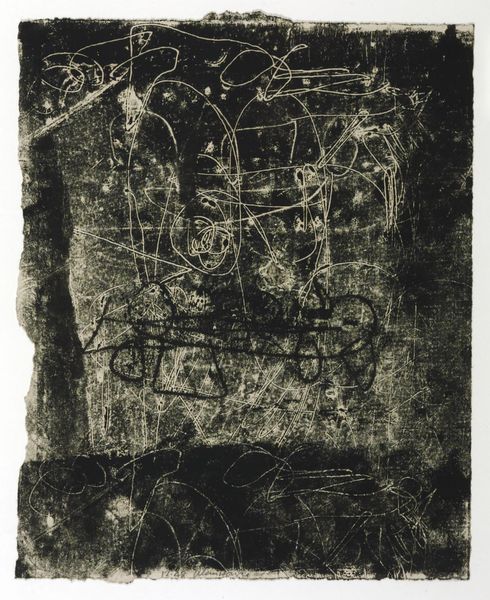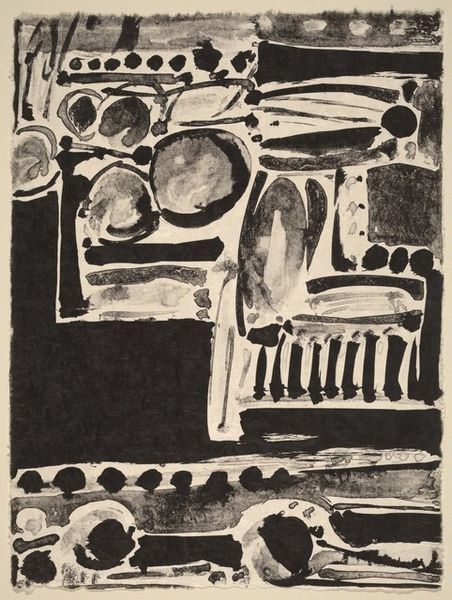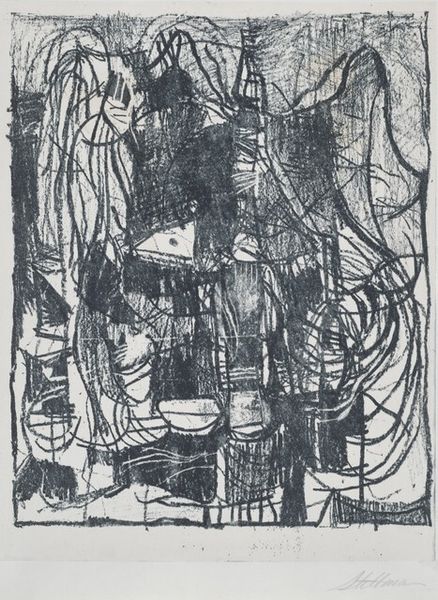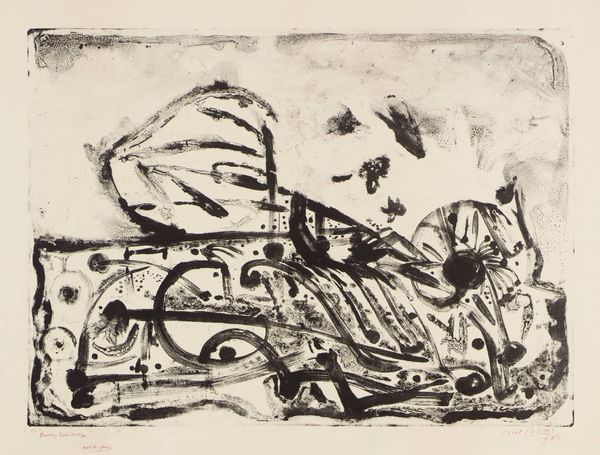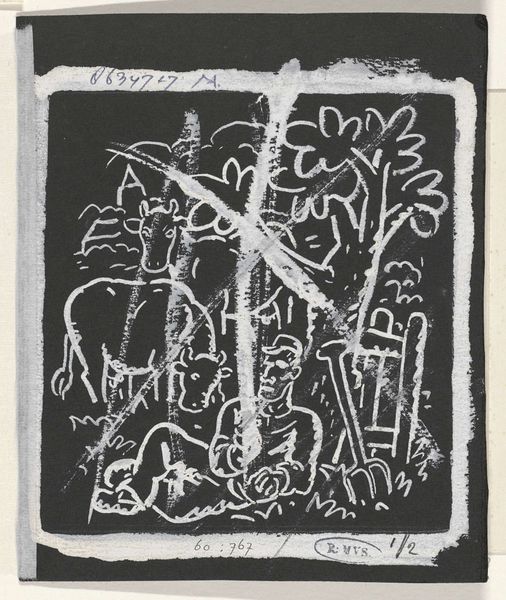
Dimensions: support: 762 x 566 mm frame: 985 x 790 x 35 mm
Copyright: © Tate | CC-BY-NC-ND 4.0 DEED, Photo: Tate
Curator: Cecil Collins, born in 1908, created this piece titled "Angel Images and Negative Spectres in Conflict". Editor: It feels like a raw, visceral rendering of internal struggle. The stark monochrome adds to the tension. Curator: The artist's process is fascinating; he often used ink and washes to create these dreamlike scenarios, probing themes of duality. His works are often interpreted as representing the human condition, specifically how spiritual beings are in conflict with the material world. Editor: Looking at the paper, I wonder about the availability of materials during its creation and how the constraints might have impacted the style. Considering the socio-political context, was there an underlying critique of power structures embedded in the imagery? Curator: I see it more as an introspective journey, using archetypes to explore the universal battle between good and evil, echoing societal concerns about conflict. Editor: True, but the ambiguity leaves room for broader interpretations. I'll be pondering the impact of this piece. Curator: Agreed. Collins's work certainly invites reflection on our place in the world.
Comments
tate 8 months ago
⋮
http://www.tate.org.uk/art/artworks/collins-angel-images-and-negative-spectres-in-conflict-t06457
Join the conversation
Join millions of artists and users on Artera today and experience the ultimate creative platform.
tate 8 months ago
⋮
Collins has often been seen as an inheritor of William Blake because of his highly personal understanding of Christian spirituality. This view has been reinforced by the fact that he, like Blake, claimed to be a visionary. It is, therefore, surprising that he exhibited this drawing with the avowedly atheist Surrealists in 1936. The biomorphic forms and mysterious, absurd imagery might be readily compared to Surrealism, but Collins’s subject is a symbolic battle between forces of good and evil. Gallery label, September 2004

